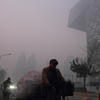Climate Change & Air Pollution
2017
Mar
09
2017
Mar
02
2017
Feb
08
2017
Feb
02
2017
Feb
01
. 2016. “Reducing curtailment of wind electricity in China by employing electric boilers for heat and pumped hydro for energy storage.” Applied Energy, 184, Pp. 987-994. Publisher's VersionAbstract
. 2011. “Black carbon and its correlation with trace gases at a rural site in Beijing: implications for regional emissions.” Journal of Geophysical Research, 116, D24. Publisher's VersionAbstract
. 2008. “Variations of O3 and CO in summertime at a rural site near Beijing.” Atmospheric Chemistry and Physics, 8, 21, Pp. 6355-6363. Publisher's VersionAbstract
. 2002. “The human dimensions of environmental policy implementation: Air quality in rural China.” Journal of Contemporary China, 11, 32, Pp. 495-513. Publisher's VersionAbstract
. 2013. “Summary: Sulfur Mandates and Carbon Taxes for 2006-2010.” In Clearer Skies Over China: Reconciling Air Quality, Climate, and Economic Goals, Pp. 59-102. Cambridge, MA: MIT Press. Publisher's VersionAbstract
. 2015. “Understanding China's carbon dioxide emissions from both production and consumption perspectives.” Renewable and Sustainable Energy Reviews, 52, Pp. 189-200. Publisher's VersionAbstract
. 2012. “The contemporary and historical budget of atmospheric CO2.” Canadian Journal of Physics, 90, 8, Pp. 707-716. Publisher's VersionAbstract
. 2010. “Establishment of a database of emission factors for atmospheric pollutant emissions from Chinese coal-fired power plants.” Atmospheric Environment, 44, 12, Pp. 1515-1523. Publisher's VersionAbstract


